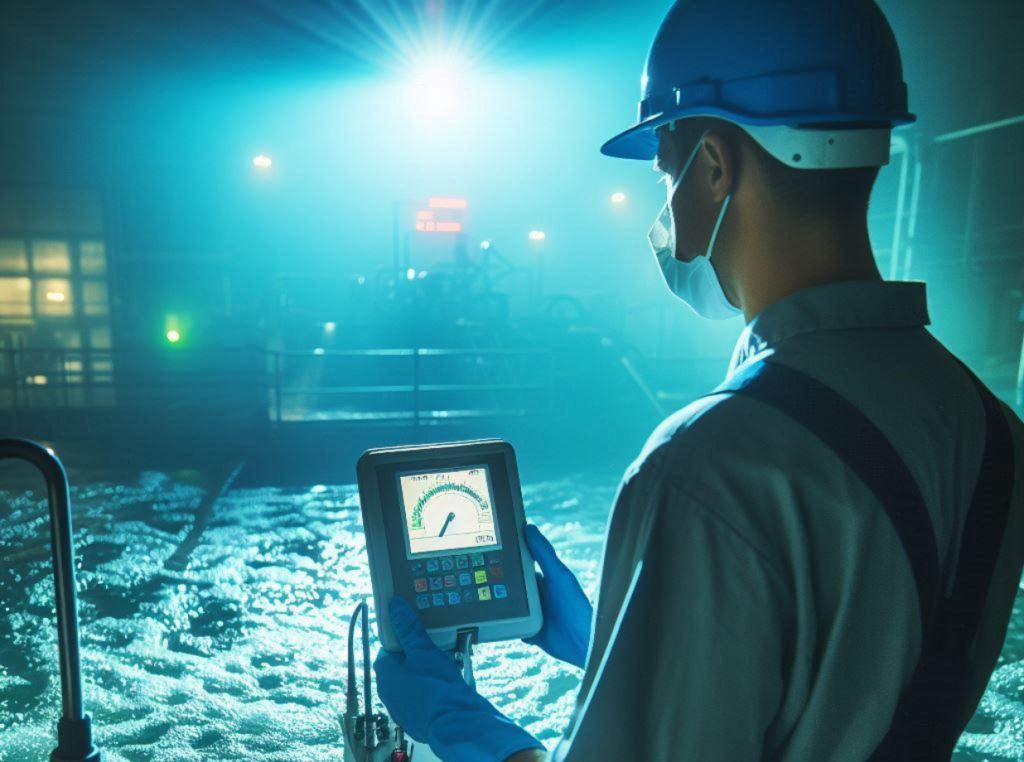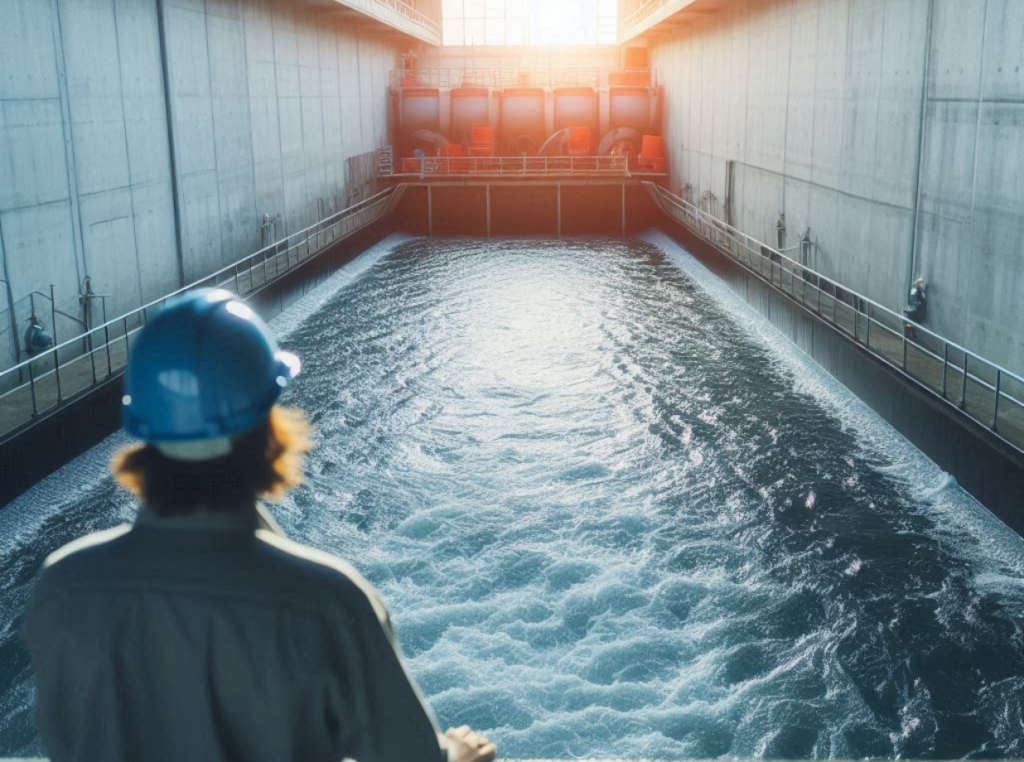Have you ever wondered how the efficiency of activated sludge treatment can be optimized? This question is fundamentally important for wastewater treatment facilities striving to meet stringent environmental standards and operational targets. This article aims to address this by exploring “The Impact of Aeration Diffusers on Activated Sludge Treatment Efficiency.

Introduction to Activated Sludge Treatment
Activated sludge treatment is a vital process in modern wastewater management. It relies on a complex network of microbiological systems to treat sewage and industrial waste. The process converts biodegradable substances into more stable substances, ensuring the treated water is safe for discharge into natural water bodies or for reuse.
The Basics of Activated Sludge Treatment
Activated sludge treatment involves the introduction of air into a tank containing wastewater and a mixed community of microorganisms. These microorganisms consume the organic matter present in the wastewater, converting it into biomass, carbon dioxide, and water. This biological process is aerobic, meaning it requires oxygen to proceed efficiently.
Importance of Aeration in Activated Sludge Treatment
Aeration is crucial because it supplies the necessary oxygen to the aerobic microorganisms that break down organic contaminants. Oxygen transfer efficiency (OTE) and mixing are the two primary factors that determine the effectiveness of aeration in biological treatment processes.
Aeration Diffusers: Types and Functions
Aeration diffusers are devices designed to facilitate the transfer of oxygen from air into the wastewater. They come in various forms and functionalities, each offering distinct advantages and disadvantages.
Types of Aeration Diffusers
- Fine Bubble Diffusers
- Release small air bubbles, providing a high surface area for oxygen transfer.
- Generally more efficient but require high maintenance due to clogging.
- Coarse Bubble Diffusers
- Produce larger bubbles, which offer less surface area compared to fine bubbles.
- Less prone to clogging and more durable but less efficient in oxygen transfer.
- Membrane Diffusers
- Use flexible or semi-permeable membranes.
- Offer a balance between fine and coarse bubble diffusers concerning efficiency and maintenance.
Functionality and Mechanism of Diffusers
Aeration diffusers function by sparging air or oxygen into the tank. The bubbles generated rise through the wastewater, dissolving oxygen into the water. This oxygen is then used by microorganisms to break down organic matter.
| Type of Diffuser | Bubble Size | Oxygen Transfer Efficiency | Maintenance Frequency |
|---|---|---|---|
| Fine Bubble Diffuser | Small | High | High |
| Coarse Bubble Diffuser | Large | Low | Low |
| Membrane Diffuser | Medium | Moderate | Moderate |

Impact on Treatment Efficiency
The choice and performance of aeration diffusers directly impact the efficiency of the activated sludge treatment.
Oxygen Transfer Efficiency (OTE)
OTE is a critical parameter that measures how effectively an aeration system can transfer oxygen from the air to the liquid phase. Fine bubble diffusers, due to their larger surface area, generally exhibit higher OTE compared to coarse bubble diffusers. However, this comes at the cost of higher energy requirements and maintenance.
Mixing and Homogenization
Good mixing ensures that dissolved oxygen is uniformly distributed throughout the tank, preventing dead zones where anaerobic conditions can prevail. Aeration diffusers contribute significantly to the hydraulic mixing in the tank. Fine bubble diffusers provide superior mixing but may require more energy to operate.
Energy Consumption
Energy efficiency is another important consideration. Fine bubble diffusers, while effective, often consume more energy due to the need for higher air pressure. Conversely, coarse bubble diffusers are more energy-efficient but less effective at oxygen transfer. The trade-off between oxygen transfer efficiency and energy consumption must be carefully balanced to optimize the performance and cost-effectiveness of the treatment plant.
Maintenance and Durability
Fine bubble diffusers, particularly membrane types, are prone to clogging and fouling. This necessitates frequent maintenance, which can increase operational costs and downtime. Coarse bubble diffusers exhibit better durability and require less maintenance, making them suitable for installations where maintenance resources are limited.
Case Studies and Real-World Applications
To better understand the practical implications of aeration diffusers, it is helpful to examine case studies from real-world applications.
Case Study 1: Municipal Wastewater Treatment Plant
A municipal wastewater treatment plant replaced its coarse bubble diffusers with fine bubble diffusers. This resulted in a significant increase in oxygen transfer efficiency, leading to higher removal rates of Biological Oxygen Demand (BOD) and Chemical Oxygen Demand (COD). However, the plant also experienced increased maintenance requirements and higher energy costs.
Case Study 2: Industrial Wastewater Treatment
An industrial plant dealing with high-strength waste switched from fine bubble to membrane diffusers. The change led to a moderate increase in oxygen transfer efficiency while reducing maintenance costs and operational disruptions. This balance between efficiency and maintenance suited the plant’s operational strategy.
| Case Study | Type of Diffuser Used | Efficiency Improvement | Maintenance Requirement | Energy Consumption |
|---|---|---|---|---|
| Municipal Wastewater Treatment Plant | Fine Bubble Diffusers | High | High | High |
| Industrial Wastewater Treatment | Membrane Diffusers | Moderate | Moderate | Moderate |

Future Trends and Innovations
The future of aeration technology is geared towards improving efficiency while minimizing energy consumption and maintenance requirements.
Advanced Materials
The development of advanced materials for diffuser membranes and components is a significant trend. These materials aim to reduce fouling and increase durability, leading to lower maintenance requirements and extended service life.
Intelligent Control Systems
Integration of intelligent control systems using real-time data and automation can optimize aeration processes. Such systems can adjust the airflow dynamically, ensuring efficient oxygen transfer while reducing energy consumption.
Hybrid Aeration Systems
Hybrid systems that combine different types of diffusers (e.g., fine and coarse bubbles) can offer a balance between high efficiency and low energy consumption. These systems can be customized to meet the specific needs of a treatment plant, maximizing operational efficiency.
Conclusion
The impact of aeration diffusers on activated sludge treatment efficiency is multifaceted, involving considerations of oxygen transfer efficiency, energy consumption, maintenance, and overall operational cost. While fine bubble diffusers generally offer higher efficiency, they come with increased energy and maintenance costs. Coarse bubble diffusers, on the other hand, provide durability and lower energy use but at the cost of reduced oxygen transfer efficiency. Practical applications and case studies demonstrate the need for a balanced approach, tailored to the specific requirements of each treatment facility. Future trends in materials, control systems, and hybrid solutions promise to further enhance the effectiveness and efficiency of aeration systems, ensuring sustainable wastewater treatment practices.
By thoroughly understanding the role of aeration diffusers, you can make informed decisions to optimize the efficiency of your wastewater treatment operations, meeting both environmental and operational goals.
Resources
Academic Papers and Research
- Oxygen Transfer in Water and Wastewater Treatment
- Comprehensive book on oxygen transfer mechanisms in treatment processes.
- Energy Efficiency in Wastewater Treatment in North America: A Compendium of Best Practices and Case Studies of Novel Approaches
- IWA report featuring case studies on energy-efficient aeration systems.
Industry Guidelines and Reports
- Evaluation of Fine Bubble Aeration Systems
- EPA report on the performance of fine bubble aeration systems.
- Design Manual: Fine Pore Aeration Systems
- EPA design manual for fine pore aeration systems in wastewater treatment.
Educational Resources
- Aeration Control System Design
- Water Online’s guide to designing effective aeration control systems.
- Understanding Activated Sludge Aeration Systems
- WWD Magazine’s overview of activated sludge aeration systems.
Video Resources
- Wastewater Training 2 – Aeration Tanks
- Educational video explaining aeration tank operations and diffuser types.
- Aeration Systems for Wastewater Treatment
- Overview of different aeration systems used in wastewater treatment.
Professional Organizations and Conferences
- Water Environment Federation (WEF) – Aeration Systems
- Resources and updates from a leading water quality organization.
- International Water Association (IWA) – Specialist Group on Design, Operation and Maintenance of Activated Sludge Plants
- Information on conferences and events focusing on activated sludge technologies.
Remember to verify these links and update them with the most current and relevant resources before publishing your content.